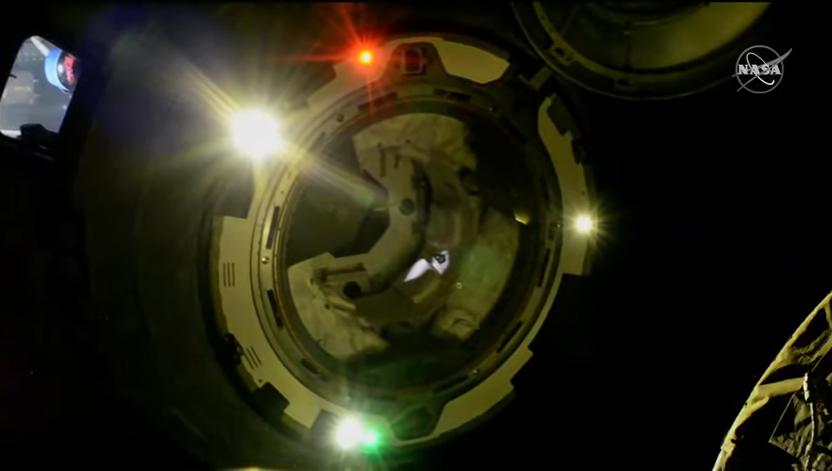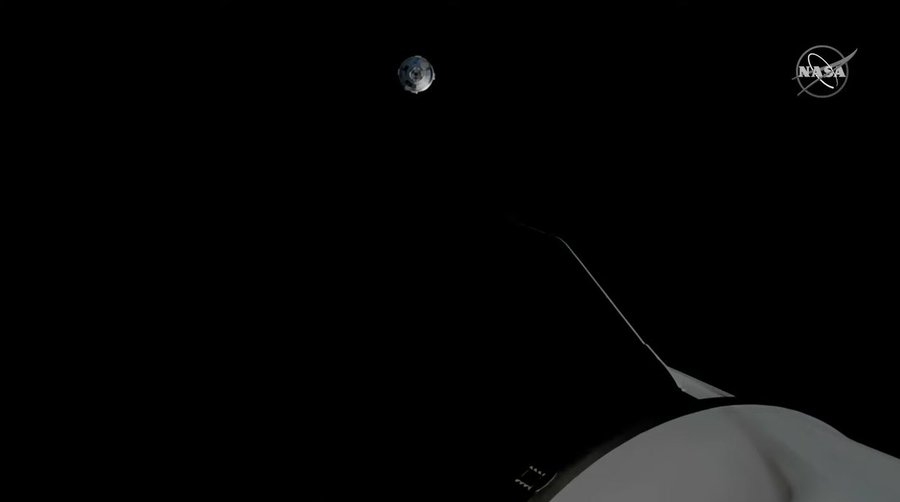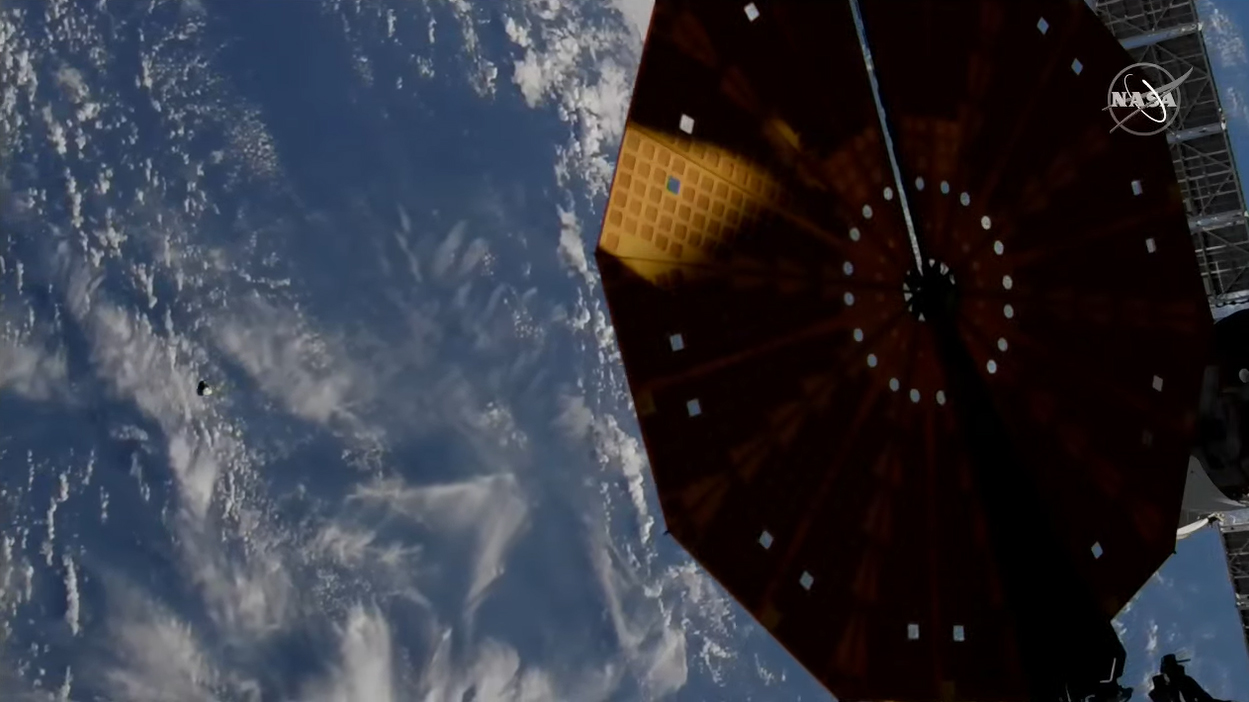Boeing's first Starliner spacecraft to visit the International Space Station is headed back to Earth after a smooth undocking from the outpost on Wednesday (May 25), setting the stage for an evening landing that you can watch live online.
Starliner cast off from the International Space Station (ISS) at 2:36 p.m. EDT (1836 GMT) Wednesday as both spacecraft sailed 271 miles above northern Singapore. The departure marked the end of five days at the station for Starliner, which is flying a critical uncrewed test flight for NASA called Orbital Flight Test 2.
"It was a great stay by Starliner," U.S. astronaut Robert Hines on the station radioed NASA's Mission Control in Houston as the capsule departed. "We're a little sad to see her go but it looked like a successful mission so far. Godspeed, Starliner."
If all goes well, the Starliner capsule will make a parachute-aided touchdown at the White Sands Missile Range, a U.S. Army facility in New Mexico at 6:49 p.m. EDT (2249 GMT). You can watch that landing live here at Space.com, courtesy of NASA TV, or directly via the space agency. A webcast of deorbit and landing operations will start at 5:45 p.m. EDT (2145 GMT).
Live updates: Boeing Starliner Orbital Flight Test 2 mission to ISS
Related: Boeing's Starliner OFT-2 test flight for NASA in amazing photos
Wednesday's landing will wrap up Orbital Flight Test-2 (OFT-2), a critical uncrewed mission to the ISS designed to show that Starliner is ready to carry astronauts to and from orbit. Boeing holds a NASA contract to provide this taxi service, as does SpaceX, which has already launched four operational crewed missions to the ISS with its Falcon 9 rocket and Dragon capsule.
As Starliner departed the space station, video cameras on the station watched as it floated silently by SpaceX's Crew Dragon capsule at the station, as well as an uncrewed Cygnus cargo ship built by Northrop Grumman also currently docked at the outpost.
Get the Space.com Newsletter
Breaking space news, the latest updates on rocket launches, skywatching events and more!



OFT-2 kicked off last Thursday (May 19), when Starliner soared into space atop a United Launch Alliance Atlas V rocket. The capsule arrived at the ISS about 24 hours later, delivering more than 500 pounds (225 kilograms) of food and other supplies to the astronauts aboard the orbiting lab.
Starliner will bring down to Earth about 600 pounds (270 kg) of cargo, including three of the station's dozen or so nitrogen oxygen recharge system (NORS) tanks, which provide atmospheric gases to the orbiting lab.
If everything goes well with Starliner's departure and touchdown, the capsule could end up carrying astronauts soon. Boeing and NASA representatives have said, for example, that they're eyeing a potential crewed flight test to the ISS around the end of 2022.
But NASA won't certify Starliner for crewed flight until it has analyzed all of the data from OFT-2. And the mission hasn't gone perfectly smoothly; two of the capsule's thrusters failed during its crucial orbit-insertion burn about 30 minutes after liftoff, for example. (A backup engine kicked on and picked up the slack.)
The original OFT had much bigger issues. During that mission, which launched in December 2019, Starliner suffered a series of software glitches and got stranded in an orbit too low for an ISS rendezvous. And OFT-2 was supposed to launch last summer, but mission team members discovered a problem with the valves in Starliner's propulsion system that took about eight months to address.
Mike Wall is the author of "Out There" (Grand Central Publishing, 2018; illustrated by Karl Tate), a book about the search for alien life. Follow him on Twitter @michaeldwall. Follow us on Twitter @Spacedotcom or on Facebook.
Join our Space Forums to keep talking space on the latest missions, night sky and more! And if you have a news tip, correction or comment, let us know at: community@space.com.

Michael Wall is a Senior Space Writer with Space.com and joined the team in 2010. He primarily covers exoplanets, spaceflight and military space, but has been known to dabble in the space art beat. His book about the search for alien life, "Out There," was published on Nov. 13, 2018. Before becoming a science writer, Michael worked as a herpetologist and wildlife biologist. He has a Ph.D. in evolutionary biology from the University of Sydney, Australia, a bachelor's degree from the University of Arizona, and a graduate certificate in science writing from the University of California, Santa Cruz. To find out what his latest project is, you can follow Michael on Twitter.









